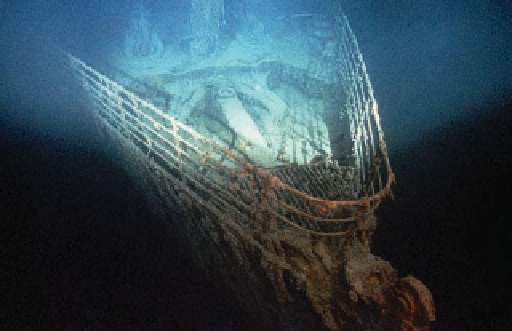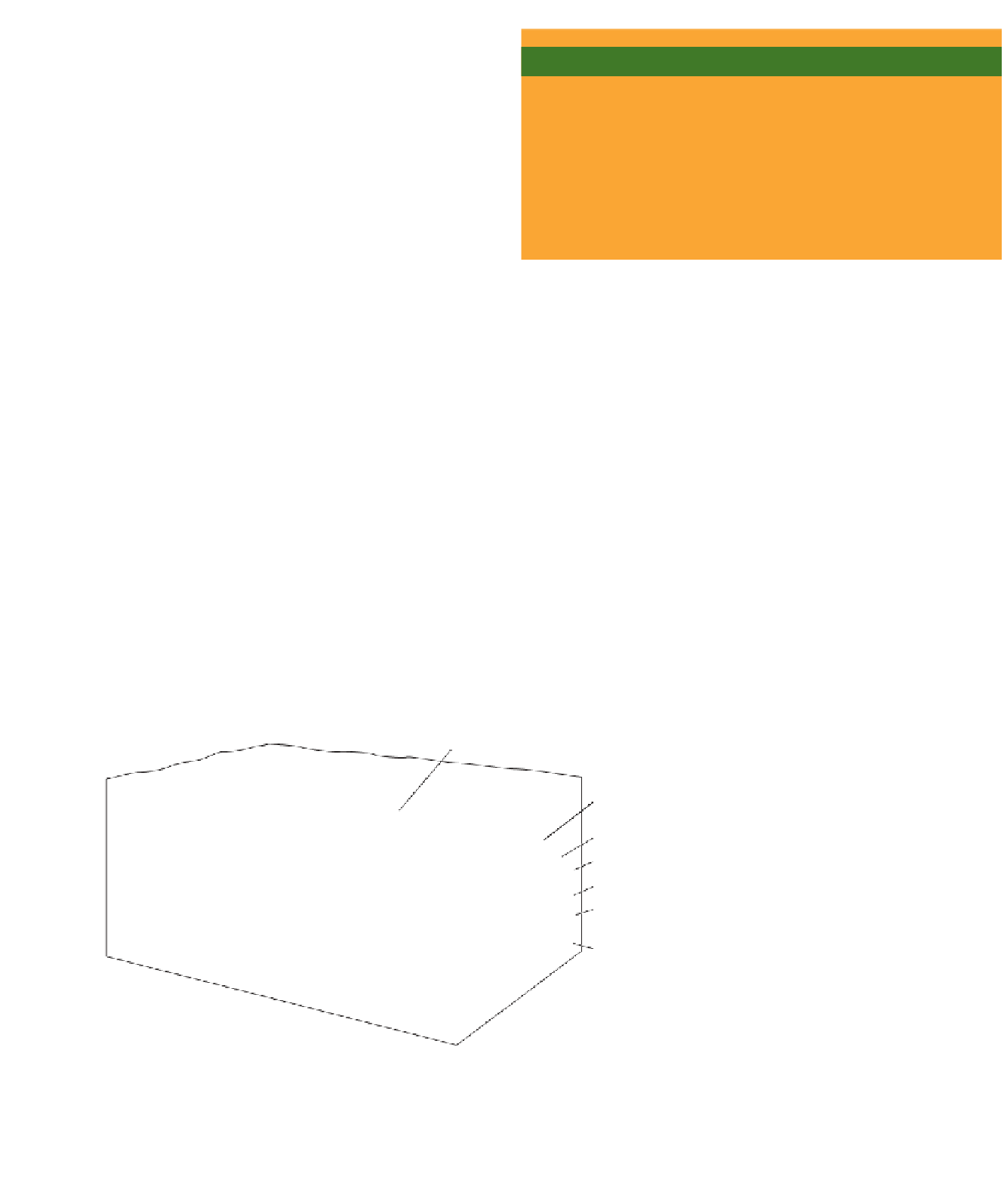Geology Reference
In-Depth Information
What Would You Do
?
As the only person in your community with any geologic train-
ing, you are often called on to explain local geologic features
and identify fossils. Several school children on a natural his-
tory fi eld trip picked up some rocks that you recognize as peri-
dotite. When you visit the site where the rocks were collected,
you also notice some pillow lava in the area and what appear
to be dikes composed of basalt. What other rock types might
you expect to fi nd here? How would you explain (1) the as-
sociation of these rocks with one another, and (2) how they
came to be on land?
◗
Sampling and drilling at oceanic ridges reveal that oce-
anic crust is indeed made up of pillow lava and sheet lava
fl ows underlain by a sheeted dike complex, just as predicted
from studies of ophiolites. But it was not until 1989 that a
submersible carrying scientists descended to the walls of a
seafl oor fracture in the North Atlantic and verifi ed what lay
below the sheeted dike complex. Just as expected, the lower
oceanic crust consists of gabbro and the upper mantle is
made up of peridotite.
Figure 9.5
Bow of the HMS
Titanic
This view of the British
ocean liner that sank in 1912 after hitting an iceberg was taken in
1986. Scientists in submersibles made several visits to the ship.
moving along large fractures called thrust faults (faults are
discussed more fully in Chapter 10). These preserved sliv-
ers of oceanic crust, along with part of the underlying up-
per mantle, are known as
ophiolites
. Detailed studies reveal
that an ideal ophiolite consists of rocks of the upper oceanic
crust, especially pillow lava and sheet lava fl ows (
Most people think of continents as land areas outlined by the
oceans; however, the true geologic margin of a continent—
where granitic continental crust changes to basalt and
gabbro oceanic crust—is below sea level. A
continental
margin
is made up of a gently sloping continental shelf, a
more steeply inclined continental slope, and, in some cases,
a deeper, gently sloping continental rise (
Figure 9.6)
underlain by a sheeted dike complex consisting of vertical
basaltic dikes, and then massive gabbro and layered gabbro
that probably formed in the upper part of a magma cham-
ber. And finally, the lowermost unit is peridotite from the
upper mantle; this is sometimes altered by metamorphism
to a greenish rock known as serpentinite. Thus, a complete
ophiolite consists of deep-sea sedimentary rocks underlain
by rocks of the oceanic crust and upper mantle (Figure 9.6).
◗
Figure 9.7). Sea-
ward of the continental margin lies the deep ocean basin.
Thus, the continental margins extend to increasingly greater
depths until they merge with
the deep seafloor. Continen-
tal crust changes to oceanic
crust somewhere beneath the
continental rise, so part of
the continental slope and the
continental rise actually rest
on oceanic crust.
◗
Mid-ocean ridge
Sediments
Pillow lava
Sheeted dikes
Massive gabbro
Cumulate
(layered) gabbro
Mantle
peridotite
As one proceeds seaward
from the shoreline across the
continental margin, the first
area encountered is the gently
sloping
continental shelf
ly-
ing between the shore and the
more steeply dipping conti-
nental slope (Figure 9.7). The
width of the continental shelf
varies considerably, ranging
from a few tens of meters to
more than 1000 km; the shelf
Gabbroic
magma
◗
Figure 9.6
Composition of Oceanic Crust New oceanic crust made up of the layers shown here
forms as magma rises beneath oceanic ridges. The composition of oceanic crust was known from
ophiolites, sequences of rock on land consisting of deep-sea sediments, oceanic crust, and upper
mantle, before scientists observed it when they descended in submersibles to seafl oor fractures.



Search WWH ::

Custom Search